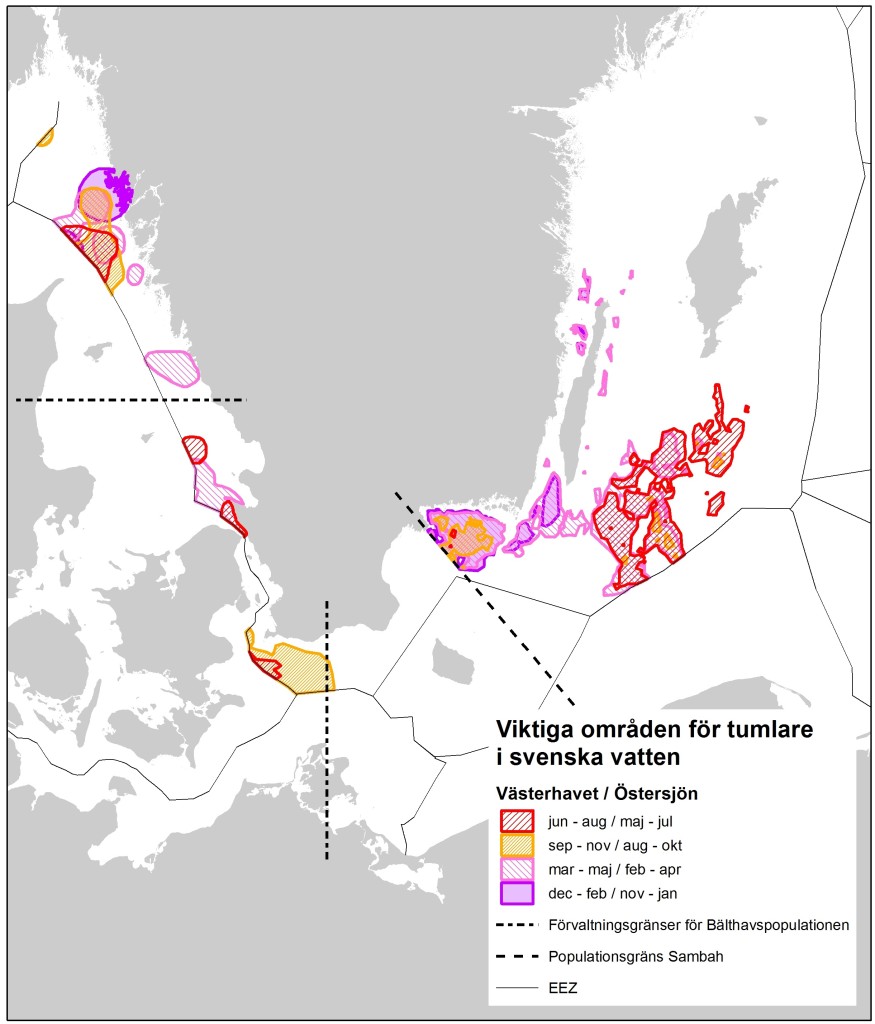A new report describes important areas for harbour porpoises identified based on density or likelihood of occurrence of harbour porpoises.
The eight areas identified in Swedish waters are:
- The northern tip of Jutland, which is used by the Skagerrak population.
- Fladen and Lilla Middelgrund, (3) Stora Middelgrund and the northern part of the Sound, and (4) the south-west Baltic Sea. These areas are primarily used by the Belt Sea population, at least during summer. No attempt was made to identify important areas in the south-west Baltic Sea during winter.
- (5) Hanö Bight, (6) South of Öland, (7) Midsjöbankarna and Hoburgs bank, and (8) Northern Öland, which are used by the Baltic Proper population.

Important areas for harbour porpoises in Swedish waters. Note that no analysis has been made for the period from November to April in the south-west Baltic Sea.
In the Skagerrak and Kattegat Seas, the areas are based on available maps of kernel densities of animals equipped with satellite transmitters in Danish waters. In the Baltic Sea the likelihood of occurrence has been modelled based on harbour porpoise echolocation activity recorded by click detectors in the Sambah project (Static Acoustic monitoring of the Baltic Sea Harbour Porpoise). The identification has been made separately for each quarter of the year, and it is indicated whether the areas are used during calving, mating and the beginning of the lactation period, or later in the lactation period and when the calving is approaching.
In addition to important areas for harbour porpoises, the spatio-temporal distribution on anthropogenic activities that may have negative impact on harbour porpoises have been compiled, together with existing marine protected areas and areas of relevant national interests.
Reference and link to report (Swedish with English summary):
Carlström, J. & Carlén, I. 2016. Skyddsvärda områden för tumlare i svenska vatten. AquaBiota Report 2016:04. 90 pp.